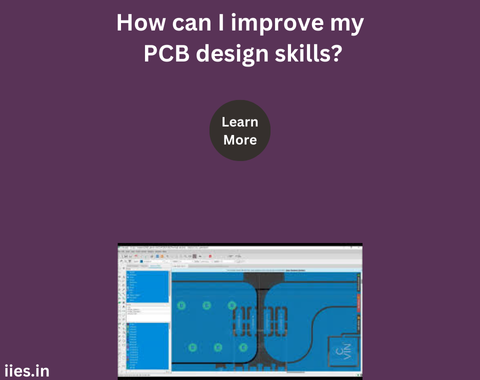
Printed Circuit Board (PCB) design is a critical skill in electronics engineering, requiring a blend of technical knowledge, creativity, and meticulous attention to detail. As the complexity of electronic devices continues to rise, the demand for proficient PCB designers grows in tandem. Whether you are a novice or a seasoned professional, there is always room for improvement. This article delves into the theoretical aspects of refining your PCB design skills, offering strategies that can guide you towards mastery.
The foundation of effective PCB design lies in a solid understanding of electrical principles, particularly when designing for embedded systems. Concepts such as signal integrity, electromagnetic interference (EMI), and impedance matching are crucial, especially in embedded applications where space is limited, and power efficiency is paramount. A designer must be well-versed in how these principles interact with physical layout and component placement in embedded systems. By regularly revisiting and studying advanced topics in electronics, you can better anticipate potential design issues and apply best practices in your layouts.
2. Mastering Design Software
PCB design software is a powerful tool, and mastery of this software is essential for improving your design skills. Whether it’s Altium Designer, KiCad, Eagle, or another platform, dedicating time to learning the advanced features and shortcuts of your chosen software can significantly boost your efficiency. This includes understanding how to use simulation tools, design rule checks (DRC), and automated routing features effectively. Regularly updating your software skills ensures you stay current with new features and industry standards.
Understanding the manufacturing process is vital for creating designs that are not only functional but also manufacturable. DFM principles involve considering the limitations and capabilities of PCB fabrication and assembly processes. By integrating DFM into your design workflow, you can minimize potential issues during production, such as component misalignment, soldering defects, and trace breakage. This holistic approach to design ensures that your PCBs are both reliable and cost-effective.
Component placement and routing are at the heart of PCB design. Efficient placement reduces trace length, minimizes crosstalk, and optimizes thermal performance. By studying different placement strategies and their impact on circuit performance, you can enhance your layouts. Routing, particularly high-speed and differential pair routing, requires a deep understanding of signal flow and timing. Practicing various routing techniques and studying real-world examples can sharpen your skills and improve the quality of your designs.
Signal integrity issues can lead to unreliable performance, especially in high-speed designs. Learning to manage factors such as trace impedance, return paths, and via placement is essential. Equally important is the design of power distribution networks (PDNs). Ensuring stable and clean power delivery to all components is crucial for the proper functioning of your PCB. By focusing on these aspects, you can create designs that are robust and resilient under varying operating conditions.
The field of PCB design is constantly evolving, with new technologies, materials, and methodologies emerging regularly. To stay competitive, it is essential to engage in continuous learning. This could involve attending webinars, reading industry journals, participating in forums, or enrolling in advanced courses. Staying informed about the latest trends and innovations allows you to incorporate cutting-edge techniques into your designs.
Collaboration is a powerful tool for growth. Engaging with fellow designers, whether through online communities, professional networks, or team projects, provides opportunities to exchange ideas and learn from others’ experiences. Seeking feedback on your designs, especially from more experienced designers, can offer valuable insights and highlight areas for improvement. This collaborative approach fosters a culture of continuous improvement and innovation.
PCB design is an intricate process that requires patience and precision. Rushing through a design can lead to errors that may not be apparent until testing or manufacturing. Cultivating a disciplined approach to your work, where attention to detail is paramount, will result in higher quality designs. By taking the time to meticulously review your work and iterate as necessary, you can ensure that your designs meet the highest standards.
Improving your PCB design skills is a journey that requires dedication, continuous learning, and a willingness to adapt. By deepening your understanding of electrical principles, mastering your design software, prioritizing DFM, and emphasizing key design techniques, you can elevate your proficiency. Staying updated with industry trends, collaborating with peers, and maintaining a disciplined approach will further enhance your abilities, ultimately leading to the creation of innovative and reliable PCB designs.
Indian Institute of Embedded Systems – IIES